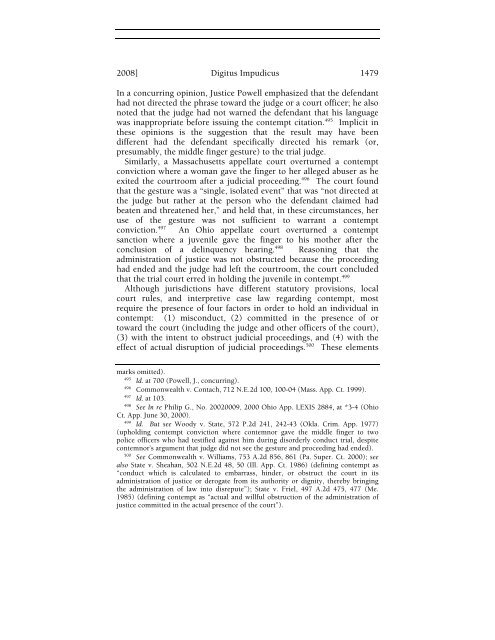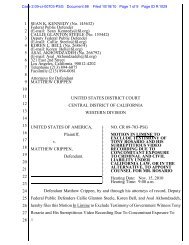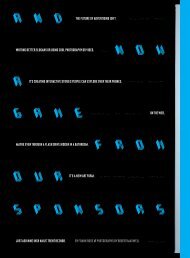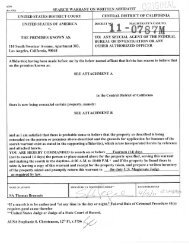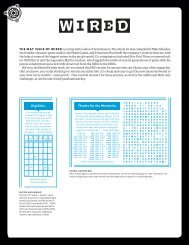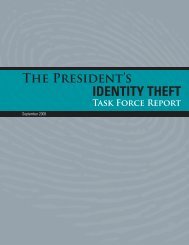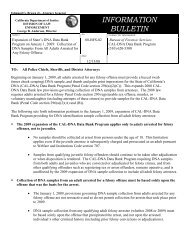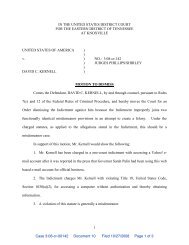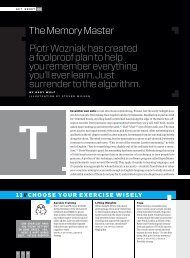Digitus Impudicus: The Middle Finger and the Law - Wired
Digitus Impudicus: The Middle Finger and the Law - Wired
Digitus Impudicus: The Middle Finger and the Law - Wired
Create successful ePaper yourself
Turn your PDF publications into a flip-book with our unique Google optimized e-Paper software.
2008] <strong>Digitus</strong> <strong>Impudicus</strong> 1479<br />
In a concurring opinion, Justice Powell emphasized that <strong>the</strong> defendant<br />
had not directed <strong>the</strong> phrase toward <strong>the</strong> judge or a court officer; he also<br />
noted that <strong>the</strong> judge had not warned <strong>the</strong> defendant that his language<br />
was inappropriate before issuing <strong>the</strong> contempt citation. 495 Implicit in<br />
<strong>the</strong>se opinions is <strong>the</strong> suggestion that <strong>the</strong> result may have been<br />
different had <strong>the</strong> defendant specifically directed his remark (or,<br />
presumably, <strong>the</strong> middle finger gesture) to <strong>the</strong> trial judge.<br />
Similarly, a Massachusetts appellate court overturned a contempt<br />
conviction where a woman gave <strong>the</strong> finger to her alleged abuser as he<br />
exited <strong>the</strong> courtroom after a judicial proceeding. 496 <strong>The</strong> court found<br />
that <strong>the</strong> gesture was a “single, isolated event” that was “not directed at<br />
<strong>the</strong> judge but ra<strong>the</strong>r at <strong>the</strong> person who <strong>the</strong> defendant claimed had<br />
beaten <strong>and</strong> threatened her,” <strong>and</strong> held that, in <strong>the</strong>se circumstances, her<br />
use of <strong>the</strong> gesture was not sufficient to warrant a contempt<br />
conviction. 497 An Ohio appellate court overturned a contempt<br />
sanction where a juvenile gave <strong>the</strong> finger to his mo<strong>the</strong>r after <strong>the</strong><br />
conclusion of a delinquency hearing. 498 Reasoning that <strong>the</strong><br />
administration of justice was not obstructed because <strong>the</strong> proceeding<br />
had ended <strong>and</strong> <strong>the</strong> judge had left <strong>the</strong> courtroom, <strong>the</strong> court concluded<br />
that <strong>the</strong> trial court erred in holding <strong>the</strong> juvenile in contempt. 499<br />
Although jurisdictions have different statutory provisions, local<br />
court rules, <strong>and</strong> interpretive case law regarding contempt, most<br />
require <strong>the</strong> presence of four factors in order to hold an individual in<br />
contempt: (1) misconduct, (2) committed in <strong>the</strong> presence of or<br />
toward <strong>the</strong> court (including <strong>the</strong> judge <strong>and</strong> o<strong>the</strong>r officers of <strong>the</strong> court),<br />
(3) with <strong>the</strong> intent to obstruct judicial proceedings, <strong>and</strong> (4) with <strong>the</strong><br />
effect of actual disruption of judicial proceedings. 500 <strong>The</strong>se elements<br />
marks omitted).<br />
495 Id. at 700 (Powell, J., concurring).<br />
496 Commonwealth v. Contach, 712 N.E.2d 100, 100-04 (Mass. App. Ct. 1999).<br />
497 Id. at 103.<br />
498 See In re Philip G., No. 20020009, 2000 Ohio App. LEXIS 2884, at *3-4 (Ohio<br />
Ct. App. June 30, 2000).<br />
499 Id. But see Woody v. State, 572 P.2d 241, 242-43 (Okla. Crim. App. 1977)<br />
(upholding contempt conviction where contemnor gave <strong>the</strong> middle finger to two<br />
police officers who had testified against him during disorderly conduct trial, despite<br />
contemnor’s argument that judge did not see <strong>the</strong> gesture <strong>and</strong> proceeding had ended).<br />
500 See Commonwealth v. Williams, 753 A.2d 856, 861 (Pa. Super. Ct. 2000); see<br />
also State v. Sheahan, 502 N.E.2d 48, 50 (Ill. App. Ct. 1986) (defining contempt as<br />
“conduct which is calculated to embarrass, hinder, or obstruct <strong>the</strong> court in its<br />
administration of justice or derogate from its authority or dignity, <strong>the</strong>reby bringing<br />
<strong>the</strong> administration of law into disrepute”); State v. Friel, 497 A.2d 475, 477 (Me.<br />
1985) (defining contempt as “actual <strong>and</strong> willful obstruction of <strong>the</strong> administration of<br />
justice committed in <strong>the</strong> actual presence of <strong>the</strong> court”).


